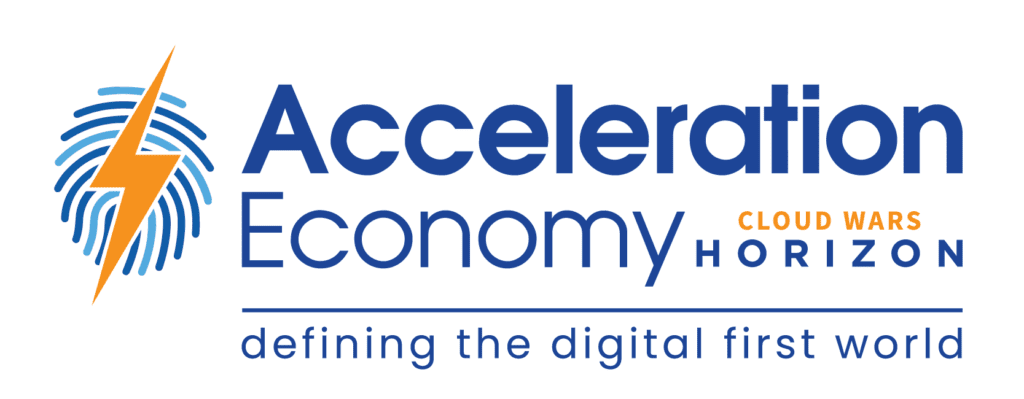IBM’s Institute for Business Value recently issued a report called “The Deep Cloud Alternative” that mirrors many of the priorities that Acceleration Economy advocates business leaders to apply when determining how and why to embark on tech projects.
Specifically, this involves using technology to accelerate growth, reimagine and develop new business models, and direct IT investments to industry-specific, customer-facing functions.
We view IBM’s assertion of leadership in developing the Deep Cloud “blueprint” — think of it as an antidote to failed digital transformation projects — as another indicator of the company’s ongoing resurgence around cloud technology. The report could be the first step in rallying the industry around a defined set of practices that tie cloud projects — and industry clouds — more formally to the business value they create.
We provided some details on IBM’s recommendations and findings in a previous report. Acceleration Economy co-founder John Siefert and analyst Tom Smith had an opportunity to hold a video discussion with one of the report’s authors, Hillery Hunter, whose titles should give a pretty clear sense of her credentials to advise businesses on cloud strategy:
- IBM Fellow
- General Manager of Industry Clouds
- CTO, IBM Cloud
Highlights
03:48 — Hunter recalls hosting a CIO discussion where one participant said he’d inherited a website — only — that had been moved to the cloud, while other systems weren’t transformed at all, illustrating the sometimes limited scope, and thinking, of “transformation” projects. As it turned out, all the other participants recounted similar experiences.
04:55 — While 30% or so of business leaders said in surveys they’re essentially done moving to the cloud, 75% to 85% also report they aren’t realizing larger benefits, such as monetizing data or turning data science projects into business value, illustrating again the digital transformation disconnect.
06:45 — Reasons this is happening include the siloed nature of IT budgets, which limits them to not being viewed as transformation vehicles; that approach lacks broader, enterprise-wide conversations about how computing and digital transformation can help improve core business processes. In addition, many organizations hire a cloud leader whose job is getting the business to the cloud, but that work doesn’t necessarily pull in the security officer, the risk officer, and the line of business owners — it’s not being managed holistically.
09:44 — Hunter explains the meaning of Deep Cloud. It starts with identifying the fundamental thing that the enterprise is supposed to be good at and then developing an end-to-end process to generate customer value. It involves looking not just at the number of apps that can be moved to the cloud but, rather, how many value chains can be transformed by being re-platformed, digitally transformed with the elasticity needed to support “burstiness” in the business.
12:05 — Hunter recounts sharing a stage with a marketing leader from Exxon Mobil, who discussed how a new gas loyalty card strategy factored in the entire customer experience, led to placing the application in the cloud, and gave the company confidence that it was elastic enough to run ads during the Super Bowl and support the potential influx of traffic and downloads. That more holistic approach is a great example of how the cloud can be leveraged to support burstiness.
15:02 — Referencing the role of industry cloud, Hunter explains that each industry has its own threats that industry clouds address with enterprise security and resiliency that can be a fundamental part of transforming an enterprise. Industry clouds give enterprises flexibility and confidence to put core operations of the business into the cloud with the right industry-specific protections.
18:55 — Deep Cloud calls for rigorous financial measurement in the form of the cost/income ratio. Hunter says at CIO, CEO, and board levels in large enterprises, these conversations are taking place, but the data that’s been gathered suggests that there’s a need for this approach to happen more broadly. IBM “is ready to have this conversation with you.” She adds that financial business cases don’t need to be a source of friction.
20:52 — Speaking to cultural considerations (authority, accountability) around Deep Cloud, Hunter references an airline customer that was planning an IT transformation at the same time it was looking at “value streams” around how customers purchase tickets. That customer ended up having business and IT transformation efforts brought together, with the result being a revamp in the day-of-flight experience in the airport. The airline then used its success as the basis to transform other processes. Still, many organizations struggle with organizational and cultural issues — they may lack processes to document business cases and they make not have the authority to take on larger transformation initiatives.
25:17 — Hunter makes a couple of recommendations by way of summary:
- Think holistically — don’t just transform DevOps, but think about DevOps plus security, compliance, regulation, and more. How can tech projects that are already launched be expanded to be holistic?
- Pick one area and try to work through a digital transformation of that area that could help remove bottlenecks and gain revenue faster with a greater scale.
Related Digital Transformation Insights:
- Why the Hospitality Industry’s Digital Transformation Needs a Frictionless Outcome
- How IBM’s 5 Elements of ‘Deep Cloud’ Deliver Material Business Value
- How CIOs Scale Their Influence During Digital Transformations
- Why Most Digital Transformation Efforts Fail
- Why People and Culture Are So Important To Digital Transformation Results
- Why Your Board Needs to Be On Board To Accelerate Digital Transformation
For more exclusive coverage of innovative cloud companies, check out Cloud Wars Horizon here:









